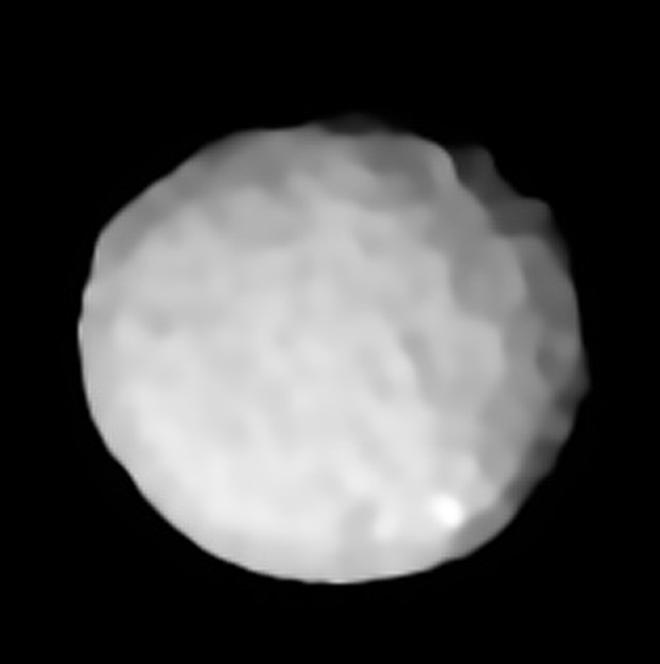Daily Quiz | 2 Pallas

Image taken by ESO’s SPHERE (Spectro-Polarimetric High-Contrast Exoplanet Research) instrument, installed on the Very Large Telescope at the Paranal Observatory, Chile. Cropped image of asteroid Pallas 2.
START THE QUIZ
1 / 5 |
In 1779, French astronomer Charles Messier spotted Pallas but assumed it was just some star. This observation led to a label given to the class of bodies like Pallas. What label?
2 / 5 |
Heinrich Olbers discovered 2 Pallas by accident when he was looking for the only other such body discovered by then, which remains the largest known object of its kind. What is its name?
3 / 5 |
The discovery and naming of Pallas was also carried over to a new chemical element that had been discovered just then, in 1803. Name the element.
4 / 5 |
Pallas is one of only three protoplanets – clumps of rock and dust that didn’t go on to form planets in the early Solar System – whose orbits lie inside the orbit of Neptune. One of the other two is the answer to Q2. Name the third.
5 / 5 |
Some scientists believe the asteroid 3200 Phaethon broke off from 2 Pallas a long time ago. 3200 Phaethon is the parent body of a highly consistent meteor shower that occurs in the first half of December. Name it.



